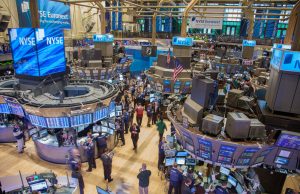Market noise is relentless. Financial headlines scream about the same handful of stocks while important opportunities—the kind that can meaningfully impact your portfolio—often fly completely under the radar.
That’s exactly why we publish this watchlist each week.
While most investors are distracted by mainstream narratives, we’re digging through earnings transcripts, analyzing technical setups, and monitoring institutional money flows to identify companies at potential inflection points. Our focus isn’t on what’s already priced in, but rather on what the market hasn’t fully appreciated yet.
Each week, we spotlight three stocks that merit your attention. We focus on opportunities where timing, valuation, and catalysts align to create potentially favorable entry points.
Our rigorous analysis goes beyond surface-level metrics to identify opportunities that most retail investors don’t have time to uncover. Each pick comes with clear reasoning, specific triggers to watch for, and a compelling risk-reward profile designed to help you make more informed investment decisions.
Here’s what we’re watching this week:
Nebius Group (NBIS)
Nebius Group represents one of the most compelling AI infrastructure opportunities as the company rapidly scales from a niche cloud provider into a full-stack platform positioned to capture significant market share in the multitrillion-dollar AI buildout. Trading at around $94.21 per share with a $23 billion market capitalization, Nebius delivered exceptional Q2 results with revenues up 625% year-over-year and 106% sequentially to $105.1 million while achieving adjusted EBITDA positive ahead of previous projections. What makes Nebius particularly attractive is its evolution beyond simple GPU compute clusters toward becoming the “next Nvidia” through rapid capacity expansion, enterprise customer acquisition, and software platform development that mirrors Nvidia’s successful full-stack approach.
The company’s growth trajectory demonstrates remarkable execution across multiple dimensions that validate its platform strategy. Management raised annualized run-rate revenue guidance from $750-$1 billion to $900-$1.1 billion while witnessing near-peak utilization rates and stable pricing for AI clusters based on Nvidia’s Hopper architecture GPUs. Nebius has rapidly expanded its customer base to include technology giants such as Cloudflare, Shopify, and Prosus, along with leading AI-native startups including HeyGen, Lightning AI, and Photoroom, providing improved long-term revenue visibility and validation of its enterprise appeal.
The strategic positioning mirrors Nvidia’s historical path from hardware provider to comprehensive platform ecosystem. Nebius aims to reach 220 megawatts of connected power by year-end 2025, including roughly 100 megawatts of active power across New Jersey and Finland data centers, while targeting 1 gigawatt of secured power by end-2026 through existing expansions and new data center sites that can reduce total cost of ownership by 20%. The company is developing an inference-as-a-service platform supporting AI models like Llama, Qwen, and Flux, which should shift revenue mix toward higher-margin software and services while creating the competitive moat that has proven so valuable for Nvidia. Despite trading at 88 times sales reflecting premium expectations, Nebius’s combination of explosive growth, enterprise traction, and strategic platform development creates significant upside potential for investors willing to accept execution risks in exchange for exposure to a potential AI infrastructure leader.
Alphabet (GOOGL)
Alphabet emerges as a dominant quantum computing play that positions the company to lead the next wave of AI advancement beyond its traditional search and advertising dominance. Trading at around $252.18 per share with a $3.0 trillion market capitalization, Alphabet has quietly built one of the most advanced AI ecosystems on the market with quantum computing representing a particularly important but overlooked strategic pillar. What makes Alphabet’s quantum positioning so compelling is its comprehensive vertical integration across hardware, software, research, and infrastructure that creates the breadth and optionality needed to remain adaptive in a fast-changing technology landscape while potentially providing differentiation for Google Cloud Platform against larger incumbents.
The company’s quantum capabilities span multiple competitive advantages that demonstrate serious long-term commitment beyond theoretical research. On the hardware side, Alphabet developed the Willow quantum processor that solved equations in minutes that would take today’s most powerful supercomputers an estimated 10 septillion years to complete. The research component centers on DeepMind, a lesser-known subsidiary that allows Alphabet to quickly test and refine new chip architectures and AI applications while making them readily available across the company’s enterprise and consumer product suites.
The infrastructure strategy positions Alphabet’s quantum investments to drive practical business value through tensor processing units (TPUs) and the open-source Cirq software framework. This combination has the potential to usher in new AI workloads into Google Cloud Platform, creating an interesting differentiator over Microsoft Azure and Amazon Web Services in the long run. McKinsey & Company projects that quantum applications could unlock trillions in economic value across mission-critical industries like energy and financial services, providing Alphabet with substantial addressable market expansion beyond its core advertising business. For investors seeking exposure to quantum computing’s transformative potential through an established technology leader with proven execution capabilities, Alphabet’s deliberate vertical integration across the quantum computing stack creates compelling long-term upside while providing defensive positioning through its diversified revenue streams.
Mid-America Apartment Communities (MAA)
Mid-America Apartment Communities presents an exceptional value opportunity in Sun Belt real estate as multiple positive catalysts converge while the stock trades nearly 10% below year-to-date highs despite a compelling fundamental setup. Trading at around $140.54 per share with a $16 billion market capitalization and offering a 4.3% dividend yield, the REIT owns over 104,000 apartment units across major Sun Belt cities and smaller growth markets that are positioned to benefit from accelerating rental dynamics. What makes Mid-America particularly attractive is the timing of multiple growth catalysts including fading new supply headwinds, aggressive development expansion, and strategic capital deployment occurring while shares trade at compelling valuations that create asymmetric risk-reward potential.
The fundamental backdrop is improving significantly as the apartment supply cycle reaches an inflection point favoring established operators like Mid-America. While the company’s core funds from operations declined from $4.44 per share in the first half of last year to $4.35 per share during the first half of 2025 due to increased new supply across Sun Belt markets, this headwind is now fading as higher interest rates have significantly slowed new development pace. The industry has passed peak new supply at a time when rental housing demand remains robust due to high home-buying costs, creating conditions for accelerating rent growth that should benefit Mid-America’s existing portfolio.
Mid-America’s offensive strategy during this transitional period demonstrates exceptional management execution through countercyclical development investments. The company recently completed four apartment development projects totaling $385.6 million for over 1,400 units that are approaching stabilization by year-end, while eight communities currently under construction represent $942.5 million investments for nearly 2,650 new units across seven markets. Additional growth catalysts include recent acquisitions of properties with nearly 700 units for almost $190 million last year plus a 318-unit community acquired in August, along with planned renovations of 5,500-6,500 units and six to seven portfolio enhancement projects. For income-focused investors seeking exposure to Sun Belt demographic trends through a proven operator with accelerating fundamentals, Mid-America’s combination of improving rental dynamics, aggressive expansion strategy, and attractive current yield creates compelling total return potential at current valuations.







